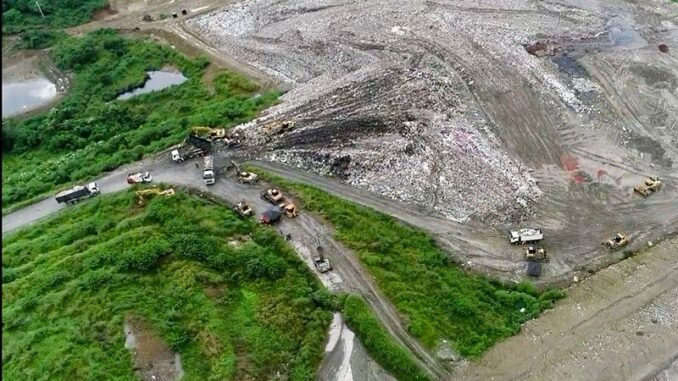
CAPAS, Tarlac — Local government units using the Kalangitan sanitary landfill in this town are unprepared for the immediate closure of the garbage facility, pointing out that disposal costs would spiral out of control should they be forced to transfer to another site.
Gener Tanhueco, Municipal Environment and Natural Resources Officer (MENRO) of this town, said in a forum on Monday, October 14, that Capas doesn’t pay any tipping fee at Kalangitan, as it is given such privilege as the host municipality.
However, the town would have to pay some P15 million annually for some 70 metric tons of waste it generates daily, should the Kalangitan facility be closed, Tanhueco said.
Worse, it would lose P10 million in annual revenue share from the landfill should Kalangitan cease operation. “That would be a huge blow to the local economy, so, we’re praying that it won’t close,” Tanhueco added.
The sanitary landfill, which is operated by the Metro Clark Waste Management Corp. (MCWMC) since 2003, is located at Sitio Kalangitan, in this town, but within the Subzone D of the Clark Special Economic Zone. It employs 330 regular workers, with more than 80 percent of the total coming from Capas.
MCWMC said it has a lease agreement with the Clark Development Corp. (CDC) for the operation of the 100-hectare landfill site until 2049. However, CDC and its parent agency, the Bases Conversion and Development Authority (BCDA), maintained that MCWMC’s contract has expired last October 5, thus the ensuing confusion and legal ruckus.
Tanhueco also said that Capas has become a hub for several companies that treat hazardous wastes because of its proximity to the Kalangitan landfill.
“If the closure happens, where would they dispose of the hazardous hospital wastes?” he asked.
Tarlac City faces the same dilemma, said Albert Tañedo, the officer in charge of the City Environment and Natural Resources Office (CENRO). He said that with some 150 to 160 metric tons of wastes generated daily, tipping fee alone reaches P52 million yearly, while handling costs P82 million.
“Should Kalangitan landfill close and we’d have to dispose of garbage elsewhere, our expenses would double because of the distance. Tarlac City is just 21 kilometers away from Kalangitan, but is around 85 kilometers away from an alternative dumpsite in Porac, Pampanga,” Tañedo pointed out.
He added that since LGU procurement of contracts is on annual basis, Capas won’t have extra funds to cover additional costs before the expiry of its waste disposal contract with MCWMC this December.
“We cannot afford any delay in garbage disposal,” Tañedo said. “Tarlac would become filthy and stinky without daily collection of garbage.”
Bamban, Tarlac MENRO Michael Lugma, meanwhile, expressed similar worries and concern about the need for bigger budget should the LGU relocate to another landfill.
He said Bamban generates 20 to 30 metric tons of wastes daily, and enjoys lower tipping fees of from P5 to 6 million annually because of favorable rates from MCWMC. “If we have to relocate, hauling cost might balloon to P12 million,” Lugma said.
At the City of San Fernando in Pampanga, the average daily waste generated is from 100 to 125 metric tons. This volume comes from 35 barangays and several subdivisions, said CENRO Gloria Doble.
Closing the Kalangitan facility “is really worrisome,” Doble said, because it is the only accredited engineered sanitary landfill in the country. “There would be a garbage crisis in case of its immediate closure,” she added.
She pointed out that the facility in Floridablanca, Pampanga is also a sanitary landfill, but is not yet qualified to bid for contracts for lack of track record in providing service to government entities.
“Shifting to other waste disposal sites would be challenging to our finances,” Doble added.


Be the first to comment